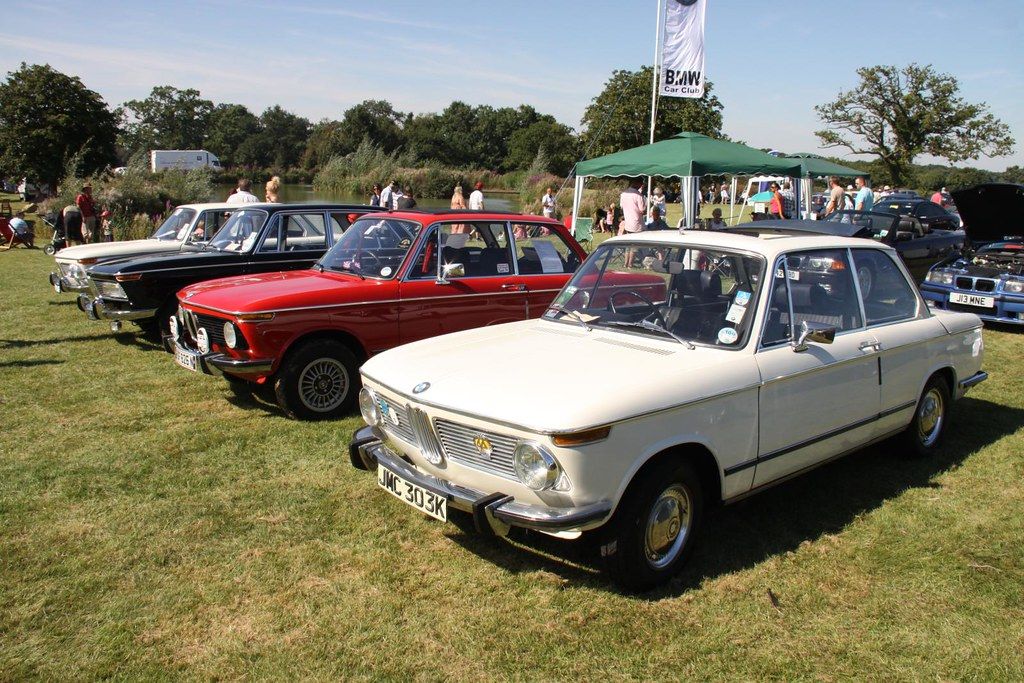The 1970s often evokes images of cultural shifts and iconic music, yet for automotive enthusiasts, it was a pivotal era where the roar of powerful engines and the sleek lines of American muscle cars truly defined a generation. This decade, despite facing evolving regulations, saw automakers unleash some of the most formidable and visually striking machines to ever grace the asphalt. These weren’t just vehicles; they were statements, embodying an unbridled spirit of performance and design that continues to captivate hearts today.
From their throaty exhaust notes that announce their presence long before they appear, to their aggressive, sculpted lines that promise exhilarating speed, 1970s muscle cars carved out an indelible niche in automotive history. They pushed the limits of power and attitude, creating legends that remain highly sought after by collectors and enthusiasts worldwide. This era solidified the muscle car as a true American icon, a testament to raw power and distinctive style.
Join us as we take an in-depth look at 14 of these legendary muscle cars, delving into the technical prowess, design philosophies, and cultural impact that made them unforgettable. We’ll explore why these machines, from their initial thunderous debut to their enduring legacy, continue to command respect and admiration. Get ready to explore the legends that shaped a generation and left an indelible mark on automotive history.
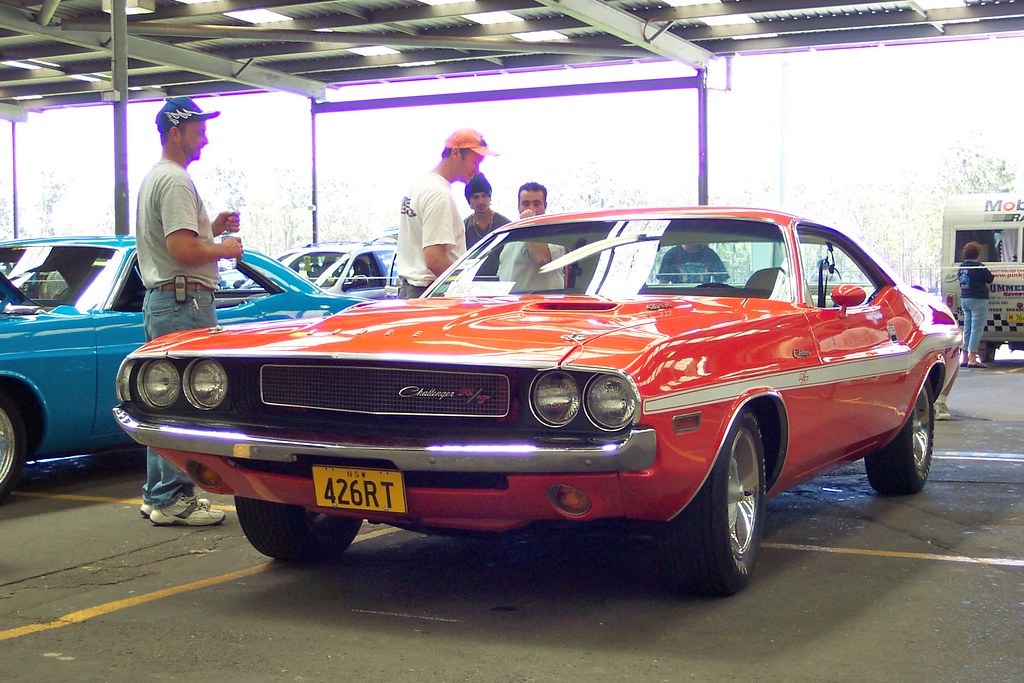
1. **1970 Dodge Challenger R/T**The 1970 Dodge Challenger R/T burst onto the scene as a serious contender in the muscle car arena, instantly recognizable with its aggressive styling. It was a machine that promised speed and delivered on that promise, particularly when equipped with the formidable 440 Six Pack engine. This powerhouse was about raw performance, offering an experience that truly lived up to the car’s menacing aesthetics.
Enthusiasts could opt for the legendary 440 Six Pack engine, which delivered around 390 horsepower, ensuring the Challenger R/T was a true beast on the road. Its design was characterized by bold lines and a distinct front grille, giving it an undeniable presence. Furthermore, the availability of vibrant colors such as Plum Crazy made this muscle car exceptionally eye-catching and distinctive.
Even today, the Challenger R/T’s wide body, bold front grille, and the unmistakable roar of its V8 engine make it impossible to overlook. Its iconic stance and profound muscle car heritage ensure its continued popularity among collectors. This classic has been immortalized in various forms of media, firmly establishing itself as a dream car for many and a benchmark for style and performance.
If you are seeking a vehicle that perfectly blends aggressive aesthetics with formidable power, the 1970 Dodge Challenger R/T remains a hard act to follow. Its design language and engineering focus truly captured the essence of the muscle car ethos, making it a standout model from a golden era of automotive innovation. The Challenger R/T unequivocally represents a peak in American performance vehicle design.
Car Model Information: 2010 Dodge Challenger R/T
Name: Dodge Challenger
Production: 1969–1974,1977–1983,2008–2023
ModelYears: 1970–1974,1978–1983,2008–2023
Caption: 2015 Dodge Challenger SRT Hellcat
Manufacturer: Dodge
Categories: 1970s cars, 1980s cars, 2000s cars, 2010s cars, 2020s cars
Summary: The Dodge Challenger is the name of three generations of automobiles produced by the American automobile manufacturer Dodge. However, the first use of the Challenger name by Dodge dates back to 1959 for marketing a “value version” of the full-sized Coronet Silver Challenger.
From model years 1970 to 1974, the first-generation Dodge Challenger pony car was built using the Chrysler E platform in hardtop and convertible body styles sharing significant components with the Plymouth Barracuda.
The second generation, from model years 1978 to 1983, was a rebadged Mitsubishi Galant Lambda / Sapporo, a coupe version of an economical compact car.
The third and current generation is a full-size muscle car that was introduced in early 2008 initially as a rival to the evolved fifth generation Ford Mustang and the fifth generation Chevrolet Camaro.
In November 2021, Stellantis announced that the 2023 model year would be the final model year for both the LD Dodge Charger and LA Dodge Challenger, as the company will focus its plans on electric vehicles rather than fossil fuel-powered vehicles, due to tougher emissions standards required by the Environmental Protection Agency for the 2023 model year. Challenger production ended on December 22, 2023, and the Brampton, Ontario, assembly plant will be re-tooled to assemble an electrified successor.
Get more information about: Dodge Challenger
Buying a high-performing used car >>>
Brand: Dodge Model: Challenger
Price: $15,850 Mileage: 83,491 mi.
Read more about: Unleashing the Legends: The 15 Most Valuable 1970s Cars Commanding Top Dollar Today

2. **1971 Plymouth ‘Cuda**The 1971 Plymouth ‘Cuda represented the pinnacle of the Barracuda lineup, a vehicle known for its commanding presence and significant horsepower. This model was particularly renowned for its availability with the legendary 426 HEMI engine, solidifying its reputation as an absolute beast on both the drag strip and the open road. The ‘Cuda was engineered for dominance, and it delivered.
One of the most revered iterations was the 1970 Plymouth Hemi ‘Cuda, a true legend among muscle car enthusiasts, boasting a powerful 426 cubic inch Hemi engine. This formidable powerplant unleashed 425 horsepower, making it one of the fastest production cars available at the time. Its performance was staggering, achieving 0-60 mph in approximately 5.6 seconds, a feat that was incredibly impressive for its era.
The ‘Cuda’s striking design was further accentuated by its array of high-impact colors, such as Plum Crazy and Lime Light, which made these machines visually unforgettable. Coupled with its distinctive shaker hood and muscular stance, the ‘Cuda exuded an aura of raw power and undeniable style. Its iconic visual cues still capture attention today, instantly marking it as a classic.
With only around 14,000 units of the Hemi ‘Cuda produced, its rarity significantly enhances its desirability among collectors. The 1971 Plymouth ‘Cuda, especially in its Hemi guise, is not merely a car; it is a profound symbol of American muscle car culture. When you hear one rumbling by, there is no doubt that you are witnessing one of the most iconic and powerful vehicles ever to roll off the assembly line.
Car Model Information: 1971 Plymouth Cuda
Caption: 1970 Hardtop Coupe
Name: Plymouth Barracuda
Manufacturer: Plymouth (automobile)
Production: 1964–1974
Assembly: Fenton, Missouri,Hamtramck, Michigan,Maywood, California,Windsor, Ontario
Layout: Front-engine, rear-wheel drive layout
Class: Pony car
Categories: 1970s cars, All articles with dead external links, All articles with unsourced statements, Articles with dead external links from February 2018, Articles with dead external links from January 2022
Summary: The Plymouth Barracuda is a two-door pony car that was manufactured by Chrysler Corporation from 1964 through 1974 model years.
The first-generation Barracuda was based on the Chrysler A-body and was offered from 1964 until 1966. A two-door hardtop (no B-pillar) fastback design, it shared a great majority of parts and bodywork with the Plymouth Valiant, except for the distinctive wraparound rear glass.
The second-generation Barracuda, though still Valiant-based, was heavily redesigned. Built from 1967 through 1969, it was available as a two-door in fastback, notchback, and convertible versions.
The third generation, offered from 1970 until 1974, was based on the Chrysler E-body, exclusive to it, and the slightly larger Dodge Challenger. A completely new design, the two-door Barracuda was available in hardtop and convertible body styles.
Get more information about: Plymouth Barracuda
Buying a high-performing used car >>>
Brand: Plymouth Model: ‘Cuda
Price: $121,000 Mileage: 64,706 mi.
Read more about: The Unbridled Twelve: 1970s Muscle Cars That Still Reign Supreme for Today’s True Enthusiasts
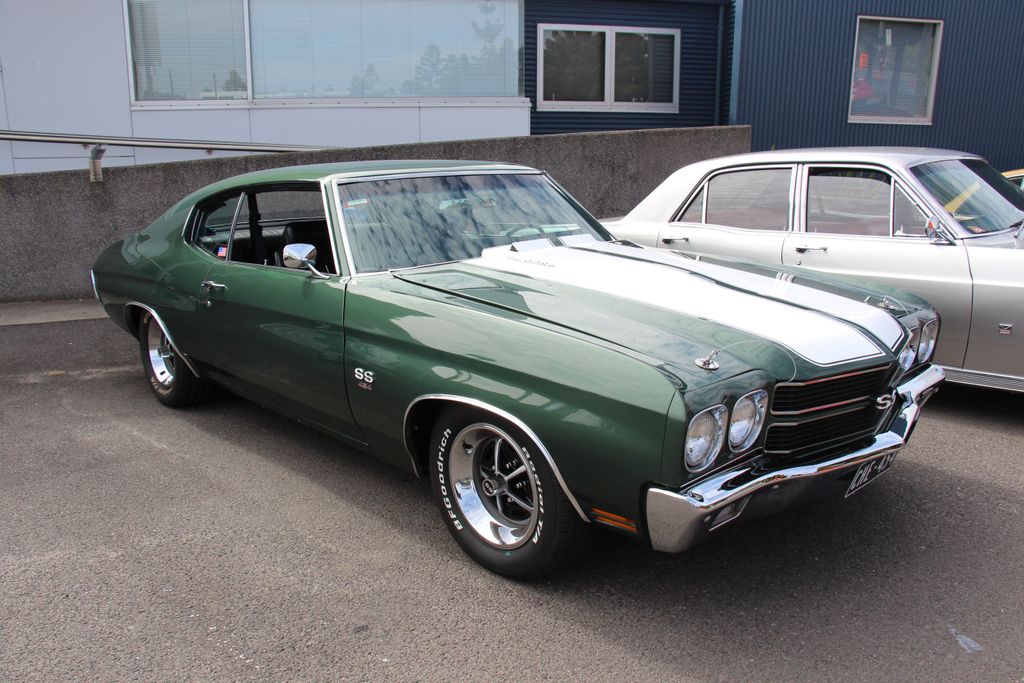
3. **1970 Chevrolet Chevelle SS 454**The 1970 Chevrolet Chevelle SS 454 holds an almost mythical status among muscle car enthusiasts, largely due to its astonishing performance capabilities. Its heart was the legendary LS6 engine, an engineering marvel that produced an incredible 450 horsepower. This immense output immediately positioned it as one of the most powerful cars of its time, a true titan on the streets.
Beyond its raw power, the Chevelle’s design was a perfect blend of sleekness and menace. It featured bold racing stripes and a wide body that conveyed an undeniable sense of aggression and speed. This meticulous combination of a commanding presence and an assertive aesthetic ensured that the Chevelle SS 454 always stood out from the crowd, reflecting its performance pedigree visually.
The 454 cubic-inch V8 engine also delivered an impressive 500 lb-ft of torque, a force you could distinctly feel when pressing the accelerator. This car was unequivocally designed for unparalleled performance, offering a driving experience that was nothing short of thrilling. Many experts consider it a definitive benchmark for muscle cars during its pivotal era.
Today, the combination of its raw power and aggressive styling ensures it remains an enduring fan favorite. When a Chevelle SS 454 arrives at a car show, it invariably attracts a significant gathering of admirers, eager to glimpse this brute from the 1970s. It is a quintessential classic, frequently cited in discussions about the greatest muscle cars of the decade, making it an essential vehicle for any serious enthusiast to appreciate.
Car Model Information: 2021 Volkswagen Tiguan 2.0T SE R-Line Black
Name: Chevrolet Chevelle
Caption: 1970 Chevrolet Chevelle SS 396 Sport Coupe
Manufacturer: Chevrolet
Production: 1963–1977
ModelYears: 1964–1977
Class: Mid-size
Platform: GM A platform (RWD)
Layout: FR layout
Successor: Chevrolet Malibu
Categories: 1970s cars, All articles needing additional references, All articles that may contain original research, All articles with specifically marked weasel-worded phrases, All articles with unsourced statements
Summary: The Chevrolet Chevelle is a mid-sized automobile that was produced by the Chevrolet division of General Motors (GM) in three generations for the 1964 to 1977 model years. Part of the GM A-body platform, the Chevelle was one of Chevrolet’s most successful nameplates. Body styles included coupes, sedans, convertibles, and station wagons. The “Super Sport” versions were produced through the 1973 model year and Lagunas from 1973 through to 1976.
After a four-year absence, the El Camino was reintroduced as part of the new Chevelle lineup in 1964.
From 1964 to 1969, GM of Canada sold a modified version of the Chevelle that included a Pontiac-style grille, and a LeMans instrument panel, marketed as the Beaumont.
The Malibu was the top-of-the-line model to 1972, and completely replaced the Chevelle nameplate starting with the redesigned, and downsized 1978 model year.
Get more information about: Chevrolet Chevelle
Buying a high-performing used car >>>
Brand: Chevrolet Model: Chevelle SS 454
Price: $16,773 Mileage: 68,625 mi.
Read more about: Unleashing the Legends: The 15 Most Valuable 1970s Cars Commanding Top Dollar Today
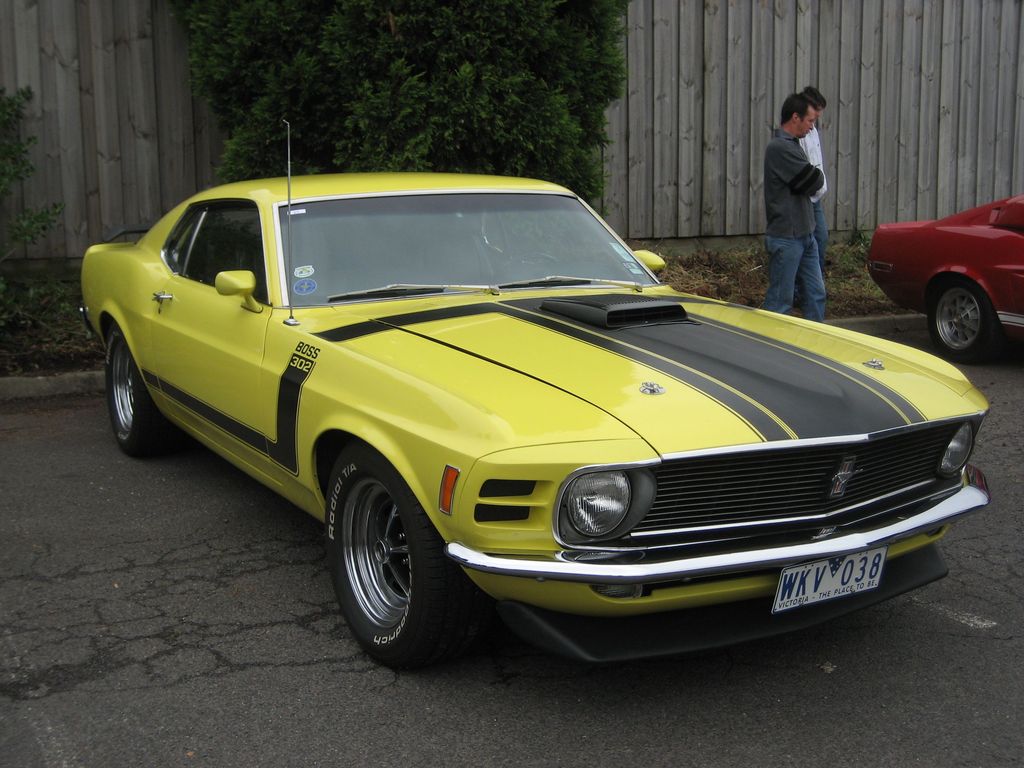
4. **1970 Ford Mustang Boss 302**The 1970 Ford Mustang Boss 302 was specifically engineered for high-performance driving, a design philosophy deeply rooted in its competitive aspirations. This model was meticulously developed to excel in Trans-Am racing, a challenging series that demanded both agility and formidable power. It came equipped with a high-revving 302-cubic-inch V8 engine, perfectly suited for the demands of the track.
Its striking appearance, characterized by a sleek fastback design and distinctive racing stripes, instantly cemented its status as a classic. The Boss 302 was not merely a car; it was a symbol of racing prowess and aggressive styling. This thoughtful integration of form and function ensured its immediate recognition and admiration from both spectators and fellow drivers.
Adding to the Mustang’s legacy from the same year was the 1970 Ford Mustang Boss 429, another true icon of muscle car engineering. This variant packed a powerful 7.0-liter V8 engine, delivering an impressive 375 horsepower along with a significant amount of torque. The Boss 429 was not just about brute force; it was also one of the rarest Mustangs ever produced, with only about 1,300 units seeing the light of day.
Today, the Boss 302 remains a true head-turner, celebrated for its timeless design and rich racing heritage. It possesses a distinctive profile that allows muscle car enthusiasts to identify it from a considerable distance, and it continues to command immense respect on the road. The Boss 429, on the other hand, stands as a collector’s ultimate dream, highly prized for its unique design, exceptional performance, and extreme rarity in the automotive world.
Car Model Information: 2021 Volkswagen Tiguan 2.0T SE R-Line Black
Layout: FR layout
Manufacturer: Ford Motor Company
Production: 1969–1970 and 2012–2013
Name: Boss 302 Mustang
Assembly: Dearborn, Michigan
Designer: Larry Shinoda
Engine: Ford Boss 302 engine,Overhead valve,V8 engine
Transmission: Manual transmission
Related: Ford Mustang
Class: Muscle car
BodyStyle: Fastback,Coupe
Categories: All articles needing additional references, All articles with unsourced statements, Articles needing additional references from June 2023, Articles with short description, Articles with unsourced statements from March 2024
Summary: The Mustang Boss 302 is a high-performance 302 cu in (4.9 L) H.O. V8-powered variant of the Ford Mustang originally produced by Ford in 1969 and 1970. Developed to meet homologation requirements to compete in Trans Am racing, it was Ford’s response to the success of the Chevrolet Camaro Z/28 in the 5 L (305.1 cu in) and under SCCA series since 1967. While substantial modifications were required to the stock Boss 302 to be competitive on the track, many thousands were sold to the public in a street-legal form that included a refined high-performance motor and upgrades to the suspension and brakes over base Mustangs.
Ford revived the Boss 302 name for another two year production run in 2012 and 2013.
Get more information about: Boss 302 Mustang
Buying a high-performing used car >>>
Brand: Ford Model: Mustang Boss 302
Price: $16,773 Mileage: 68,625 mi.
Read more about: Unleashing the Legends: The 15 Most Valuable 1970s Cars Commanding Top Dollar Today
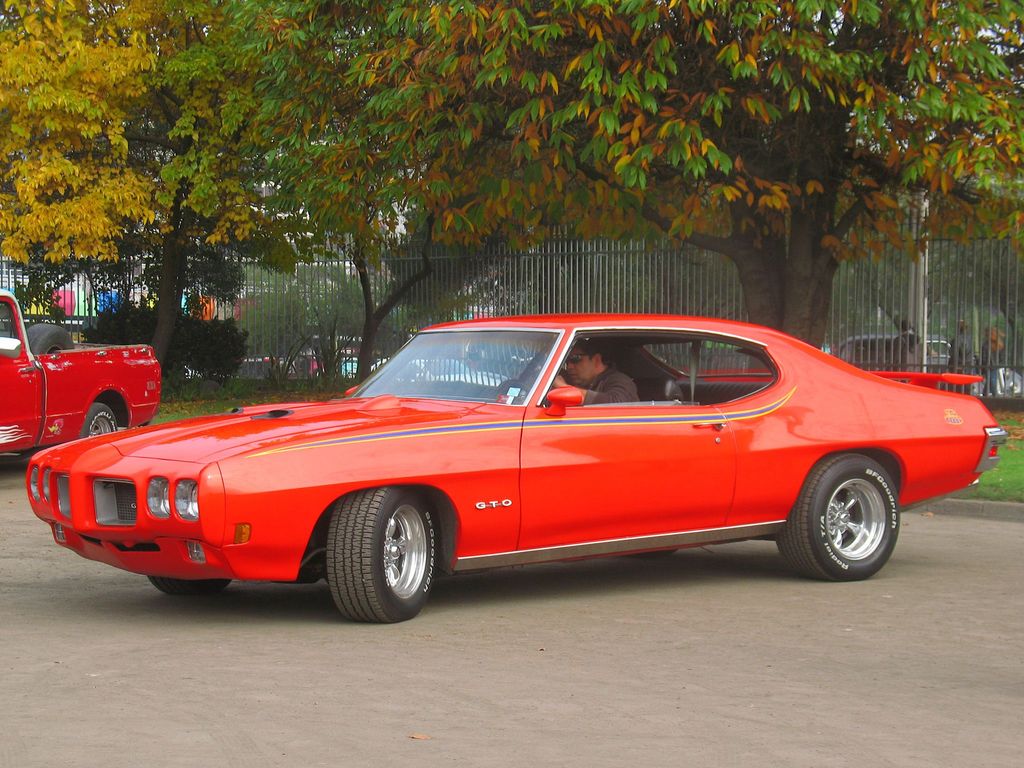
5. **1970 Pontiac GTO Judge**The 1970 Pontiac GTO Judge transcended the mere definition of an automobile; it was, in every sense, a bold statement. With its vibrant colors and audacious graphics, the Judge was designed with an unapologetic intention to stand out in any crowd. This audacious approach to styling ensured that it never faded into the background, demanding attention wherever it went.
Beneath its visually arresting exterior, the GTO Judge housed serious power. It was equipped with the potent Ram Air IV 400 engine, a powerplant that delivered formidable performance credentials. This engineering choice ensured that the Judge’s flashy looks were more than matched by its incredible capabilities, making it a true dual threat of style and substance.
Even in contemporary times, the GTO Judge’s unmistakable flashy appearance, combined with its deeply resonant, growling engine, makes it utterly impossible to overlook. Its presence, whether at a prestigious car show or simply cruising down a bustling street, invariably transforms it into a showstopper, drawing admiring glances and sparking conversations.
The GTO Judge embodies a particular spirit of the 1970s, an era when cars were allowed to be both powerful and wildly expressive. Its legacy as a definitive muscle car is secure, celebrated for its distinctive personality and its ability to capture the imagination of enthusiasts. This model truly defined what it meant to make a statement on four wheels, resonating with a passionate audience then and now.
Car Model Information: 2021 Volkswagen Tiguan 2.0T SE R-Line Black
Name: Pontiac GTO
Caption: 2005 Pontiac GTO
Manufacturer: Pontiac (automobile),Holden
Class: Mid-size car,Compact car,Mid-size car
Production: 1963–1974,2003–2006
Predecessor: Pontiac Tempest
Layout: Front-engine, rear-wheel-drive layout
ModelYears: 1964-1974 2004-2006
Categories: 1970s cars, 2000s cars, All articles with unsourced statements, Articles with short description, Articles with unsourced statements from October 2008
Summary: The Pontiac GTO is a front-engine, rear-drive, two-door, and four-passenger automobile manufactured and marketed by the Pontiac division of General Motors over four generations from 1963 until 1974 in the United States — with a fifth generation made by GM’s Australian subsidiary, Holden, for the 2004 through 2006 model years.
The first generation of the GTO is credited with popularizing the muscle car market segment in the 1960s. Some consider the Pontiac GTO to have started the trend with all four domestic automakers offering a variety of competing models.
For the 1964 and 1965 model years, the GTO was an optional package on the intermediate-sized Pontiac LeMans. The 1964 GTO vehicle identification number (VIN) started with 22, while the 1965 GTO VIN began with 237. The GTO was designated as a separate Pontiac model from 1966 through 1971 (VIN 242…). It became an optional package again for the 1972 and 1973 intermediate LeMans. For 1974, the GTO was an optional trim package on the compact-sized Ventura.
The GTO model was revived for the 2004 through 2006 model years as a captive import for Pontiac, a left-hand drive version of the Holden Monaro, itself a coupé variant of the Holden Commodore.
Get more information about: Pontiac GTO
Buying a high-performing used car >>>
Brand: Pontiac Model: GTO Judge
Price: $16,773 Mileage: 68,625 mi.
Read more about: Beyond the Boomer Icons: Why Millennials Are Steering Clear of These Classic Cars and Reshaping the Collector Market
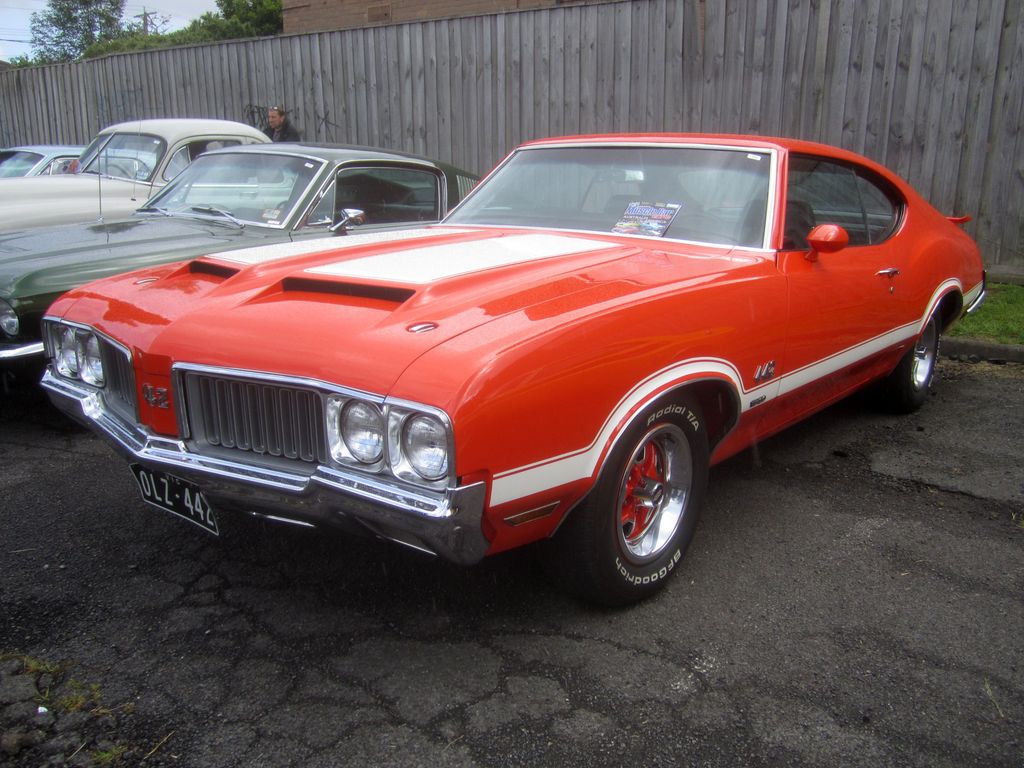
6. **1970 Oldsmobile 442 W-30**The 1970 Oldsmobile 442 W-30 had a reputation as a formidable sleeper car, capable of astonishing performance despite its somewhat understated appearance. Unlike many of its more flamboyant contemporaries, you might not immediately expect this vehicle to pack an impressive 370 horsepower and a colossal 500 lb-ft of torque under its hood. Yet, its true purpose was unequivocally built for exceptional performance.
At its core, the 1970 Oldsmobile 442, particularly the W-30 version, featured a robust 455 cubic inch V8 engine that delivered an impressive 360 horsepower. This powerplant was complemented by a four-barrel carburetor and offered drivers a choice between manual or automatic transmissions, catering to diverse driving preferences. The aggressive styling, marked by distinctive lines, further ensured its ability to turn heads.
For those who prioritized outright performance, the 442 W-30 was more than capable, achieving 0 to 60 mph in approximately 6 seconds. This rapid acceleration cemented its status as a serious contender in the muscle car landscape, proving that understated elegance could indeed hide a ferocious beast. Its engineering focus was squarely on delivering a potent and responsive driving experience.
Today, the 442 W-30 stands as a powerful symbol of refined muscle, perfectly blending high performance with a touch of classic class. It does not overtly scream for attention, yet it undoubtedly commands it when discerning enthusiasts catch a glimpse of this powerhouse. Collectors actively seek out this model, especially the rare W-30 variant, cherishing its unique combination of power and understated rarity within the muscle car world.
Car Model Information: 1969 Oldsmobile 442
Name: Oldsmobile 442
Manufacturer: Oldsmobile
ModelYears: 1964–1980,1985–1987,1990–1991
Class: Muscle car
Layout: FR layout
Caption: 1971 Oldsmobile 442
Categories: 1960s cars, 1970s cars, 1980s cars, All articles with unsourced statements, Articles with short description
Summary: The Oldsmobile 4-4-2 is a muscle car produced by Oldsmobile between the 1964 and 1987 model years. Introduced as an option package for US-sold F-85 and Cutlass models, it became a model in its own right from 1968 to 1971, spawned the Hurst/Olds in 1968, then reverted to an option through the mid-1970s. The name was revived in the 1980s on the rear-wheel drive Cutlass Supreme and early 1990s as an option package for the new front-wheel drive Cutlass Calais.
The “4-4-2” name (pronounced “Four-four-two”) derives from the original car’s four-barrel carburetor, four-speed manual transmission, and dual exhausts. It was originally written “4-4-2” (with badging showing hyphens between the numerals), and remained hyphenated throughout Oldsmobile’s use of the designation. Beginning in 1965, the 4-4-2s standard transmission was a three-speed manual along with an optional two-speed automatic and four-speed manual, but were still badged as “4-4-2″s.
Because of this change, from 1965 on, according to Oldsmobile brochures and advertisements, the 4-4-2 designation referred to the 400 cubic inch engine, four-barrel carburetor, and dual exhausts. By 1968, badging was shortened to simply “442”, but Oldsmobile brochures and internal documents continued to use the “4-4-2” model designation.
Get more information about: Oldsmobile 442
Buying a high-performing used car >>>
Brand: Oldsmobile Model: 442
Price: $43,990 Mileage: 24,000 mi.
Read more about: The Unbridled Twelve: 1970s Muscle Cars That Still Reign Supreme for Today’s True Enthusiasts

7. **1971 Dodge Charger R/T**The 1971 Dodge Charger R/T emerged as a quintessential muscular and stylish car, adamantly refusing to compromise on performance. Its distinctive design, famously referred to as the “Coke-bottle” shape, was both aggressive and strikingly modern, further enhanced by its innovative hidden headlights. This bold aesthetic ensured that the Charger R/T possessed an immediate and unforgettable visual impact.
Underneath its captivating exterior, the Charger R/T was engineered to deliver raw power, a characteristic crucial for any muscle car bearing the R/T designation. Enthusiasts had the option of formidable engines such as the 440 Six Pack or the legendary 426 HEMI. These powerplants ensured that the car’s aggressive looks were backed up by an equally impressive, if not superior, level of performance on the road.
The blend of its assertive style and outright speed solidified the Charger R/T’s reputation as a dominant force in the automotive world. It was designed not just to be driven, but to make a profound statement with every turn of the wheel. The car’s dynamic capabilities provided a thrilling experience, whether it was accelerating on a drag strip or cruising effortlessly on a highway.
Even today, the 1971 Charger R/T is celebrated for its harmonious fusion of style and speed, continuing to be a focal point of admiration. Whether it’s commanding attention while cruising down the highway or drawing crowds at a car meet, this iconic vehicle inherently demands recognition. It stands as a powerful testament to Dodge’s commitment to creating high-performance machines that were as aesthetically pleasing as they were potent.
Moving further into this captivating era, we uncover more titans that left an indelible mark on the asphalt. The 1970s, a period often remembered for its bold cultural shifts, truly saw the muscle car come into its own, transforming mere transportation into powerful expressions of automotive artistry and engineering. These next seven selections further exemplify the distinctive style and enduring cultural impact that cemented their place in history.
Car Model Information: 2021 Volkswagen Tiguan 2.0T SE R-Line Black
Name: Dodge Charger
Caption: 1969 Dodge Charger
Manufacturer: Dodge
Production: 1966–1978,1981–1987,2005–present
ModelYears: 1966–1978,1982–1987,2006–present
Categories: 1960s cars, 1970s cars, 1980s cars, 2000s cars, 2010s cars
Summary: The Dodge Charger is a model of automobile marketed by Dodge in various forms over eight generations since 1966.
The first Charger was a show car in 1964. A 1965 Charger II concept car resembled the 1966 production version.
In the United States, the Charger nameplate has been used on mid-size cars, personal luxury coupes, subcompact hatchbacks, and full-size sedans.
Get more information about: Dodge Charger
Buying a high-performing used car >>>
Brand: Dodge Model: Charger R/T
Price: $16,773 Mileage: 68,625 mi.
Read more about: Unleashing the Legends: The 15 Most Valuable 1970s Cars Commanding Top Dollar Today
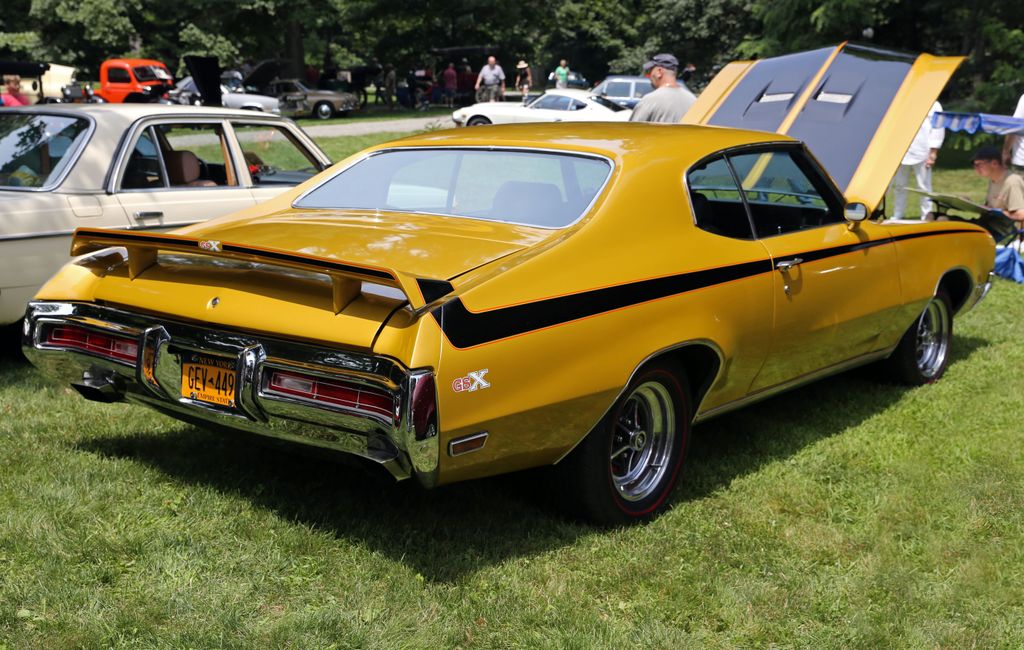
8. **1971 Buick GSX**While perhaps not as universally recognized as some of its contemporaries, the 1971 Buick GSX is undeniably a serious machine that commands respect. For those in the know, this vehicle delivered incredible torque, largely thanks to its formidable 455 Stage 1 engine, making it one of the fastest muscle cars of its era. It was a testament to Buick’s commitment to combining luxury with raw, unadulterated power.
The GSX was not shy about making a visual statement either. Its bold stripes and distinctive styling ensured it stood out from the crowd, a perfect blend of aggressive performance and unique aesthetics. This meticulous attention to design allowed it to carve its own niche, proving that a muscle car could be both potent and visually striking without conforming to every mainstream expectation.
Rarity plays a significant role in the GSX’s allure today. With only 678 units produced, it ranks as one of the rarer gems from its time, particularly the Stage 1 version, which saw just 400 examples. This scarcity, coupled with its immense performance capabilities, ensures it remains a highly sought-after classic for discerning collectors and enthusiasts who appreciate its unique legacy.
The 1970 Buick GSX, in particular, housed a massive 455 cubic inch V8, pushing out an impressive 510 lb-ft of torque. This car’s appeal extended beyond sheer power; its bold design truly made it turn heads. Collectors today actively seek out this model, cherishing its unique combination of power and understated rarity within the muscle car world.
Read more about: The Unbridled Twelve: 1970s Muscle Cars That Still Reign Supreme for Today’s True Enthusiasts
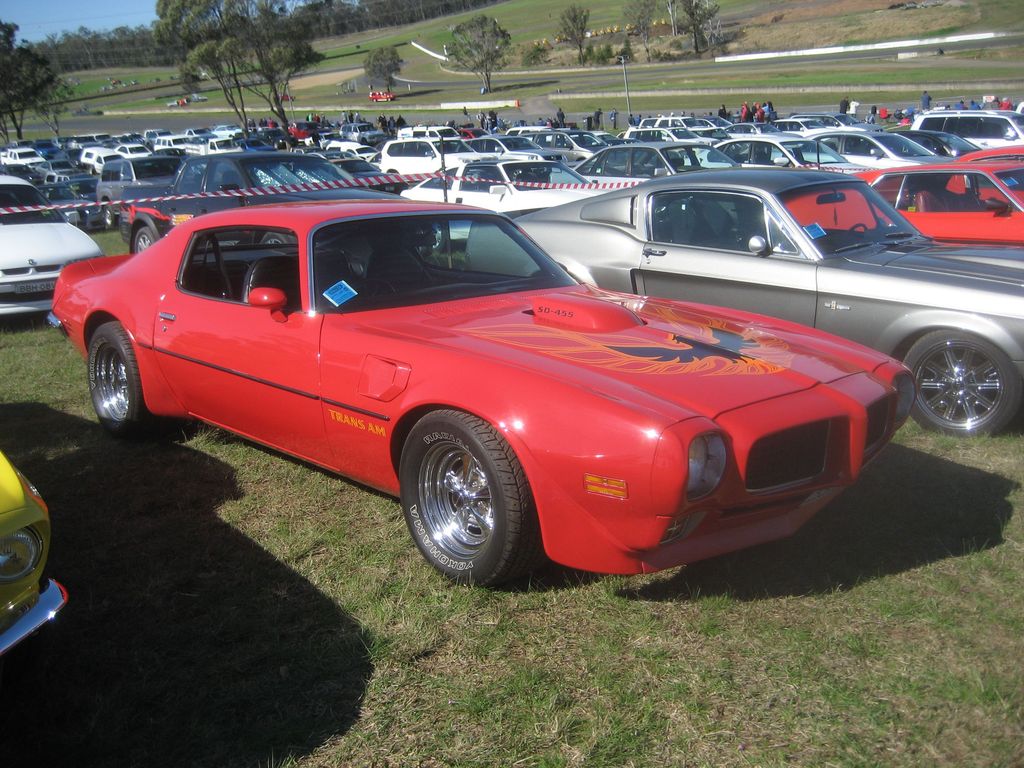
9. **1973 Pontiac Firebird Trans Am**The 1973 Pontiac Firebird Trans Am has cemented its place in popular culture, often remembered for its iconic role in the “Smokey and the Bandit” movies. However, to consider it merely a Hollywood star would be to overlook its true essence as a muscle car with a formidable attitude. Emblazoned with its distinctive screaming chicken hood decal and propelled by a powerful V8 engine, it was a vehicle that truly embodied the spirit of the 1970s.
Even today, the Trans Am’s styling remains instantly iconic, a quintessential representation of ’70s coolness. Its aggressive stance, sharp lines, and unmistakable presence continue to captivate onlookers. When a Trans Am makes an appearance at a car show, it invariably draws a crowd, eager to take a closer look at this legendary machine that exudes confidence and power.
The cultural impact of the Trans Am transcends its cinematic fame. For many, it represented the ultimate dream car of its era, symbolizing freedom, power, and a touch of rebellious flair. This enduring appeal has solidified its status as a favorite among collectors and classic car lovers alike, a testament to its timeless design and the exhilarating driving experience it offered.
While specific engine output varied across the 1970s, early models, such as the 1970 Firebird Trans Am, offered choices like a 400 cubic-inch V8 or the more potent 455 cubic-inch V8. The 400 Ram Air III option, for instance, could produce up to 335 horsepower, showcasing the impressive performance capabilities that defined the Trans Am lineage throughout the decade.
Car Model Information: 2021 Volkswagen Tiguan 2.0T SE R-Line Black
Name: Pontiac Firebird
Caption: The second, third, and fourth generations of,the Pontiac Firebird Trans Am
Manufacturer: Pontiac (automobile)
Production: February 23, 1967 – August 30, 2002
ModelYears: 1967 – 2002
Class: Pony car,Muscle car
Platform: GM F platform
Related: Chevrolet Camaro
Layout: Front engine, rear-wheel-drive layout
Categories: 1970s cars, 1980s cars, 1990s cars, 2000s cars, All articles with dead external links
Summary: The Pontiac Firebird is an American automobile built and produced by Pontiac from the 1967 to 2002 model years. Designed as a pony car to compete with the Ford Mustang, it was introduced on February 23, 1967, five months after GM’s Chevrolet division’s platform-sharing Camaro. This also coincided with the release of the 1967 Mercury Cougar, Ford’s upscale, platform-sharing version of the Mustang.
The name “Firebird” was also previously used by GM for the General Motors Firebird series of concept cars in the 1950s.
Get more information about: Pontiac Firebird
Buying a high-performing used car >>>
Brand: Pontiac Model: Firebird Trans Am
Price: $16,773 Mileage: 68,625 mi.
Read more about: Unleashing the Legends: The 15 Most Valuable 1970s Cars Commanding Top Dollar Today
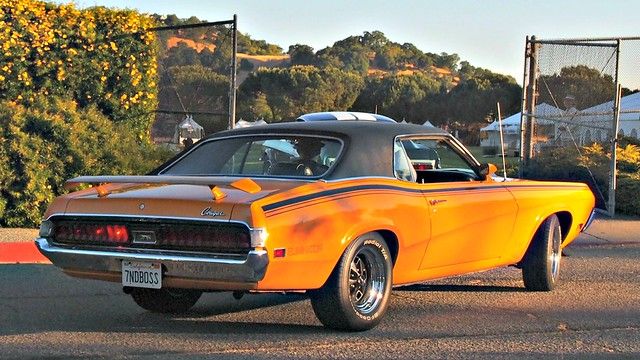
10. **1970 Mercury Cougar Eliminator**The 1970 Mercury Cougar Eliminator was Mercury’s audacious answer to the burgeoning muscle car craze, designed from the ground up to capture attention. With its bold stripes, functional spoiler, and the thrilling availability of an optional Boss 302 engine, this car was engineered not just to drive, but to truly turn heads and dominate the visual landscape of the street.
Its aggressive looks were perfectly complemented by a foundation of solid performance, making the Eliminator a serious contender in a highly competitive segment. While perhaps less popularized than its Mustang counterpart, it confidently held its own, delivering impressive 0-60 mph times around 6.6 seconds, proving its mettle where it mattered most – on the road.
Today, the Cougar Eliminator is frequently regarded as an underrated gem within the classic muscle car world. Its unique place in history, characterized by distinctive styling cues and a comfortable interior, continues to draw significant appreciation from enthusiasts. It masterfully blends aggressive aesthetics with a refined driving experience, offering a unique proposition for collectors.
This muscle car truly represents a unique synthesis of performance and elegance. With a variety of powerful V-8 engine options, including a 351 cubic inch engine and the optional 428 Cobra Jet, the Eliminator provided compelling power. Its sleek design, paired with sporty handling, makes it a fascinating and important chapter in muscle car development.
Car Model Information: 2021 Volkswagen Tiguan 2.0T SE R-Line Black
Name: Mercury Cougar
Caption: 1969 Mercury Cougar (first generation)
Manufacturer: Mercury (automobile)
Layout: Front-engine, rear-wheel-drive layout
ModelYears: 1967–1997,1999–2002
Class: Pony car,Personal luxury car,Mid-size car,Sport compact
Categories: 1960s cars, 1970s cars, 1980s cars, 1990s cars, 2000s cars
Summary: The Mercury Cougar is a series of automobiles that was sold by Mercury from 1967 to 2002. The model line is a diverse series of vehicles; though the Cougar nameplate is most commonly associated with two-door coupes, at various stages in its production, the model also was offered as a convertible and a hatchback. During its production as the mid-size Mercury line, the Cougar was also offered as a four-door sedan and five-door station wagon.
In production for 34 years across eight generations (skipping the 1998 model year), the Cougar is second only to the Grand Marquis (36 years) in the Mercury line for production longevity. 2,972,784 examples were produced, making it the highest-selling Mercury vehicle. During the 1970s and 1980s, the marketing of the Mercury division was closely associated with the Cougar, with promotional materials advertising Mercury dealers as “The Sign of the Cat” with big cats atop Lincoln-Mercury dealer signs. Cat-related nameplates were adopted by other Mercury lines, including the Bobcat and Lynx.
During its production, the Cougar was assembled at the Dearborn Assembly Plant (part of the Ford River Rouge Complex) in Dearborn, Michigan from 1967 until 1973, San Jose Assembly (Milpitas, California) from 1968 into early 1969, Lorain Assembly (Lorain, Ohio) from 1974 until 1997, and at Flat Rock Assembly (Flat Rock, Michigan) from 1999 through 2002.
Get more information about: Mercury Cougar
Buying a high-performing used car >>>
Brand: Mercury Model: Cougar Eliminator
Price: $16,773 Mileage: 68,625 mi.
Read more about: Unleashing American Thunder: The 13 Most Iconic Muscle Cars Ever Built for Speed Enthusiasts
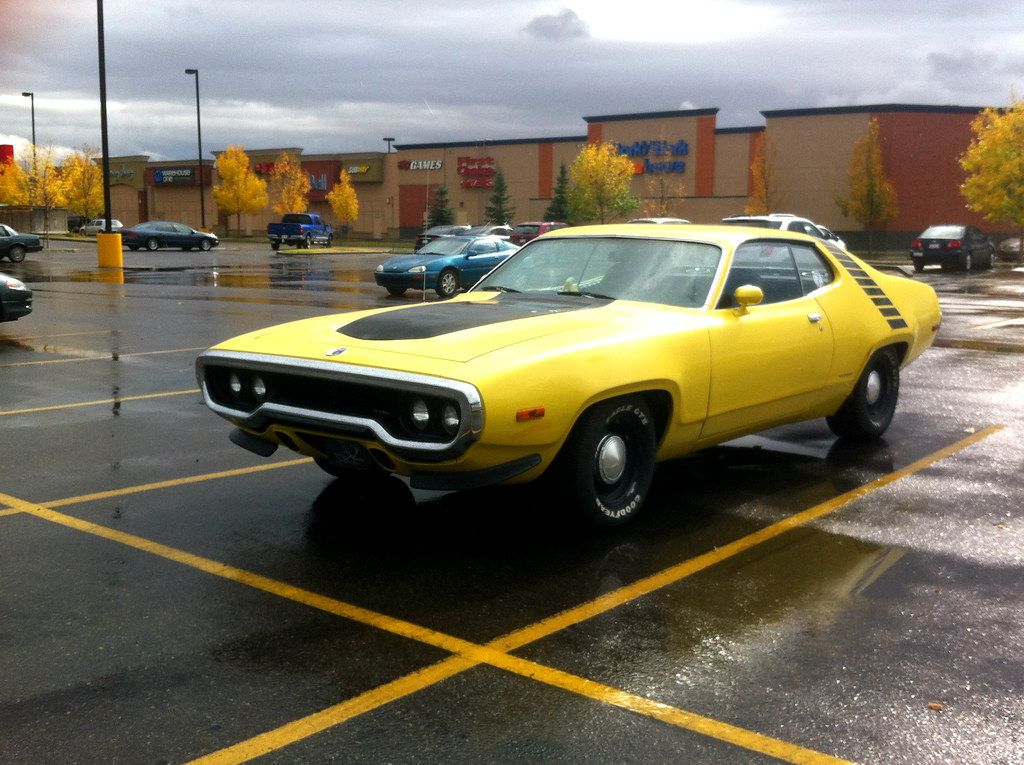
11. **1972 Plymouth Road Runner**The 1972 Plymouth Road Runner injected a playful, cartoonish twist into the serious business of muscle cars, literally adopting the name of the famous Looney Tunes character. Yet, beneath its lighthearted facade, this car was unequivocally built for speed and raw power. With potent engine options, including the revered 440 Six Pack, it was a vehicle designed to leave a lasting impression.
The Road Runner’s enduring appeal lies in its harmonious blend of muscle and sheer fun. It offered enthusiasts a potent package that didn’t take itself too seriously, distinguishing it from many of its more stoic competitors. This unique approach made it a consistent favorite, captivating drivers with its spirited performance and charismatic personality.
Adding to its distinctive charm was the signature “beep beep” horn, a playful nod to its namesake that, along with its sleek design, consistently brought smiles to onlookers’ faces. The Road Runner proved that performance could indeed come with a sense of humor, creating a memorable and endearing presence wherever it roamed.
This was a no-nonsense muscle car that prioritized performance above all. From its powerful engine options to its straightforward, yet sleek design, the Road Runner embodied an unpretentious pursuit of speed. It remains a powerful symbol of a time when cars were designed to thrill and excite without unnecessary frills.
Car Model Information: 2021 Volkswagen Tiguan 2.0T SE R-Line Black
Name: Plymouth Road Runner
Assembly: Detroit,Michigan
Manufacturer: Plymouth (automobile)
Class: Mid-size car
Production: 1968–1980
Related: unbulleted list
Layout: FR layout
Categories: 1970s cars, 1980s cars, All articles needing additional references, All articles with peacock terms, All articles with unsourced statements
Summary: The Plymouth Road Runner is a muscle car introduced by Chrysler in the United States for the 1968 model year and marketed under its Plymouth brand. Initially based on the Belvedere, the brand’s basic mid-size model, the Road Runner combined a powerful engine with a spartan trim level and a price that undercut increasingly upscale and expensive muscle cars such as the Pontiac GTO and Plymouth’s own GTX. It was initially a sales success.
The Road Runner was built in three generations on the mid-size B platform. Like most muscle cars, its performance and sales declined in the 1970s due to an increasing focus on fuel economy and the adoption of more stringent U.S. emission standards. The nameplate became to a trim package for the compact Plymouth Volaré for model year 1976—no longer offering any special performance capability—and was discontinued in 1980.
Get more information about: Plymouth Road Runner
Buying a high-performing used car >>>
Brand: Plymouth Model: Road Runner
Price: $16,773 Mileage: 68,625 mi.
Read more about: Beyond the Mainstream: 14 Unforgettable ’70s Classic Cars That Shaped Automotive History for Enthusiasts
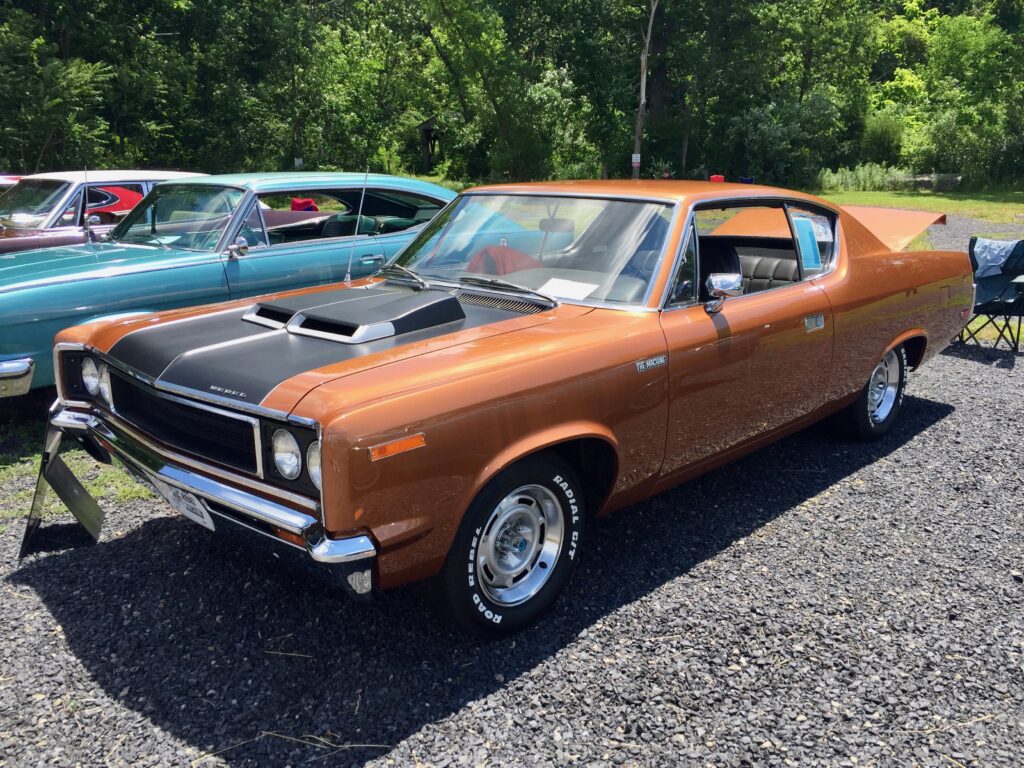
12. **1970 AMC Rebel Machine**The 1970 AMC Rebel Machine was a bold declaration in a sea of established muscle cars, unafraid to defy convention. Its striking red, white, and blue color scheme ensured it was impossible to ignore, demanding attention from every vantage point. Crucially, its impressive 340-horsepower engine ensured that this vibrant exterior was backed by a serious commitment to performance, proving it was far more than just a pretty face.
This car’s unique styling was matched by its solid performance capabilities, making it a truly compelling package. The Rebel Machine wasn’t just about making a visual splash; it was engineered to deliver a powerful and responsive driving experience that stood shoulder-to-shoulder with its more mainstream rivals, offering drivers a distinctive alternative.
Today, the Rebel Machine stands as a rare and highly prized collector’s piece. Its audacious design and robust performance make it an absolute must-see at any car gathering, inevitably sparking conversations and drawing admiration. It represents a fascinating chapter in muscle car history, highlighting AMC’s willingness to innovate and stand apart.
In an era where many muscle car offerings faced challenges with increasing size and weight, the Rebel Machine maintained a balance. While its power might not have been the highest in sheer numbers, its overall package delivered a nimble and potent performance, solidifying its reputation as a distinctive and highly desirable classic.
Car Model Information: 2021 Volkswagen Tiguan 2.0T SE R-Line Black
Caption: 1968 AMC Rebel 770 station wagon
Name: AMC Rebel
Aka: Australia,Mexico,Europe
Manufacturer: American Motors Corporation
Production: 1967–1970 (US market)
ModelYears: 1967–1970 (US market)
Assembly: Australia
Class: Mid-size car
BodyStyle: sedan (car),convertible,hardtop,4-door sedan,station wagon
Engine: 232 CID
Abbr: on approx.
Transmission: Manual transmission,Overdrive (mechanics),4-speed manual floor or console,Automatic transmission,3-speed “Shift-Command” on console
Layout: Front-engine, rear-wheel drive layout
Wheelbase: 114 in
Length: {{convert,197,in,mm,0,abbr=on
Width: 77.29 in
Height: 53.5 in
Weight: 3500 lb
Platform: AMC’s “senior cars”
Predecessor: Rambler Classic
Successor: AMC Matador
Related: AMC Ambassador
Categories: 1970s cars, AMC vehicles, All articles with dead external links, Articles with dead external links from July 2023, Articles with permanently dead external links
Summary: The AMC Rebel (known as the Rambler Rebel in 1967) is a midsized car produced by American Motors Corporation (AMC) from the 1967 until the 1970 model year. It replaced the Rambler Classic. A similar AMC Matador line replaced the Rebel models, starting with the 1971 model year.
The Rebel was positioned as the high-volume seller in the independent automaker’s line of models. The Rebel was also available in several specialty models, including station wagons featuring themed trim and luxury equipment offered only in selected geographical regions. A high-performance, low-priced muscle car version was produced in 1970, the Machine, which is most recognized in its flamboyant white, red, and blue trim.
The Rebel is the shorter-wheelbase, intermediate-sized version of the longer-wheelbase, full-sized Ambassador line.
The Rebel was built at AMC’s West Assembly Line (along with the Ambassador) in Kenosha, Wisconsin, and in Brampton, Ontario, Canada (Bramalea – Brampton Assembly Plant).
The Rebel was also assembled from Complete Knock-down (CKD) kits under license in Europe (by Renault in 1967), in Mexico (by Vehiculos Automotores Mexicanos), in Costa Rica by Purdy Motor; and from Semi Knockdown kits (SKD) in Australia (by Australian Motor Industries), and in New Zealand (by Campbell Motor Industries). Although the Rambler name was discontinued on the Rebel in the U.S. and Canadian markets after the 1967 model year, the cars continued to be sold in international markets under the historic “Rambler” brand.
Get more information about: AMC Rebel
Buying a high-performing used car >>>
Brand: AMC Model: Rebel Machine
Price: $16,773 Mileage: 68,625 mi.
Read more about: Ignite Your Passion: 15 Iconic Cars That Still Dominate Men’s Automotive Dreams and Inspire Unforgettable Drives
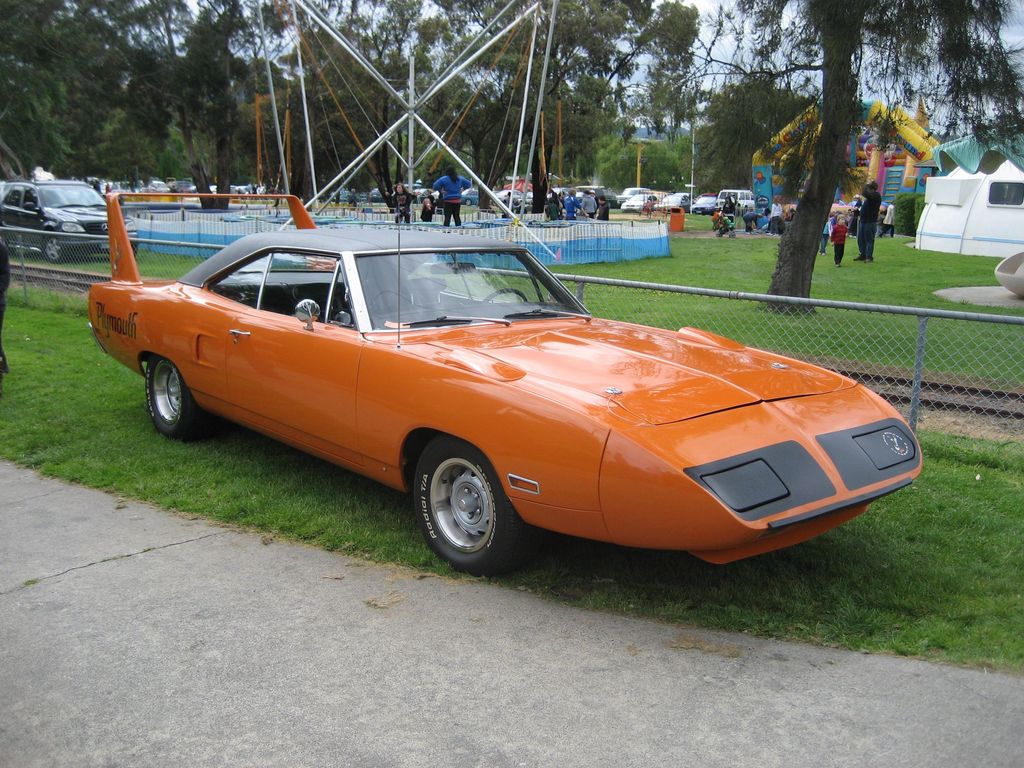
13. **1970 Plymouth Superbird**The 1970 Plymouth Superbird was not merely a car; it was a purebred racing machine explicitly built for NASCAR dominance. Its unmistakable design, featuring a massive rear wing and an aerodynamic nose cone, gave it an appearance so radical it looked as though it were designed for space travel, not the conventional highway. This extreme styling was a direct consequence of its track-focused engineering.
However, its striking looks were far from its only attribute. Underneath that distinctive sheet metal, the Superbird packed serious horsepower, ensuring it could deliver on the promises made by its aerodynamic form. This blend of radical design and formidable power made it a force to be reckoned with on the circuit, translating directly to its street credibility.
Even in contemporary times, the Superbird remains one of the most instantly recognizable cars on the planet. Its polarizing design means you either love its audacious form or find it utterly outrageous, but there is simply no denying that this car turns heads wherever it goes. It embodies an era of unbridled automotive ambition and competitive spirit.
As a limited-edition muscle car specifically designed for NASCAR, the Superbird holds a unique place in automotive lore. Its powerful engine options and distinctive styling were not just for show; they were essential components of its high-performance mission, ensuring its legacy as a true icon of speed and engineering.
Read more about: The Unbridled Twelve: 1970s Muscle Cars That Still Reign Supreme for Today’s True Enthusiasts
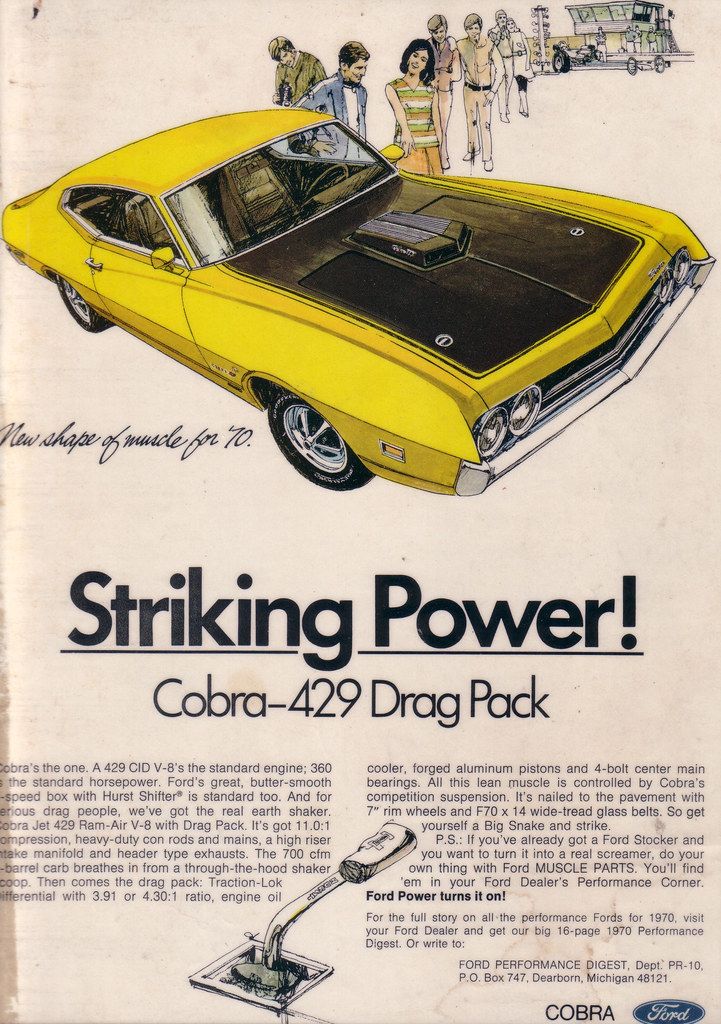
14. **1970 Ford Torino Cobra**The 1970 Ford Torino Cobra brought a genuine NASCAR pedigree to the street, embodying a fierce spirit of competition and performance. Its sleek, fastback design, combined with the availability of the potent 429 Cobra Jet engine, ensured it was a force to be reckoned with on both the streets and the racing track, a dual threat that few could match.
Today, the Torino Cobra is a relatively rare sight, making it a true treat for enthusiasts when one appears. It consistently draws admiration for its understated performance and incredibly sharp styling, prompting discerning collectors to do a double-take. This car represents a powerful combination of aesthetic appeal and raw capability, often flying under the radar compared to its flashier counterparts.
Despite its streamlined appearance, the Torino Cobra was a substantial vehicle, featuring a wheelbase of 116 inches and a length of 204 inches. Under the hood, the 429-cubic-inch V8 engine delivered impressive horsepower, proving that this model was not just about size; it packed a serious, undeniable punch that commanded respect on any road.
Its sporty design perfectly encapsulated the bold ambitions of the era, reflecting a period when American automakers were pushing the boundaries of what was possible in performance vehicles. The 1970 Ford Torino Cobra remains a cherished classic in the muscle car community, celebrated for its robust engineering and enduring legacy.
Car Model Information: 2021 Volkswagen Tiguan 2.0T SE R-Line Black
Aka: Ford Fairlane (Venezuela)
Name: Ford Torino
Caption: 1970 Ford Torino Cobra SportsRoof
Manufacturer: Ford Motor Company
Production: 1968–1976
Class: Mid-size car,muscle car
Layout: FR layout
Related: Mercury Montego
Assembly: ubl
Predecessor: Ford Fairlane (Americas)
Successor: Ford LTD II
Categories: 1960s cars, 1970s cars, All Wikipedia articles written in American English, All articles with vague or ambiguous time, Articles with short description
Summary: The Ford Torino is an automobile that was produced by Ford for the North American market between 1968 and 1976. It was a competitor in the intermediate market segment and essentially a twin to the Mercury Montego line.
Just as the Ford LTD had been the upscale version of the Ford Galaxie, the Torino was initially an upscale variation of the intermediate-sized Ford Fairlane. In the 1968 and 1969 model years, the intermediate Ford line consisted of lower-trim Fairlanes and its subseries, the upper-trim Torino models. In 1970, Torino became the primary name for Ford’s intermediate, and the Fairlane was now a subseries of the Torino. In 1971, the Fairlane name was dropped altogether, and all Ford intermediates were called Torino.
Most Torinos were conventional cars, and generally the most popular models were the four-door sedans and two-door hardtops. However, Ford produced some high-performance “muscle car” versions of the Torino by fitting them with large powerful engines, such as the 428 cu in (7.0 L) and 429 cu in (7.0 L) “Cobra-Jet” engines. Ford also chose the Torino as the base for its NASCAR entrants, and it has a successful racing heritage.
Get more information about: Ford Torino
Buying a high-performing used car >>>
Brand: Ford Model: Torino Cobra
Price: $16,773 Mileage: 68,625 mi.
Read more about: The Unbridled Twelve: 1970s Muscle Cars That Still Reign Supreme for Today’s True Enthusiasts
As we conclude our journey through these 14 legendary muscle cars of the 1970s, it becomes abundantly clear that this decade was a true zenith for American automotive engineering. From their thunderous exhaust notes to their aggressive, sculpted lines, these machines transcended mere transportation, becoming vivid statements of power, design, and a cultural phenomenon that still resonates today. Each model, whether a drag strip champion or a refined street cruiser, tells a compelling story of an era defined by an unyielding passion for performance and an unapologetic embrace of distinctive style. These icons of the asphalt continue to inspire awe, proving that some legends truly never fade. Their legacy is not just in their horsepower, but in the enduring spirit they represent for generations of car enthusiasts.



